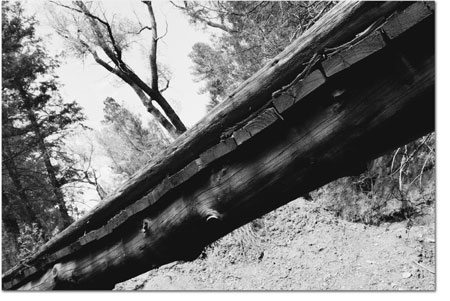| ||
| Slowing down on the Test Track City slows plans to improve Durango Mountain Park trails SideStory: Weighing in on the Mountain Park
by Will Sands The Durango Mountain Park is not passing the test. The City of Durango’s first major open space network, fabled singletrack network and favorite backyard getaway has issues, and the City and Trails 2000 had hoped to start buffing the trail system out this summer. However, a once ambitious plan for the trail system is getting off to a slow start as the team works to gauge and address community concerns. Less than a mile west of downtown, the Durango Mountain Park – or Test Track – consists of 271 undeveloped acres laced with more than a dozen miles of trails. Long a popular recreation area, the park gained permanent protection in 1995 thanks to a cooperative effort by the City of Durango, Trails 2000 and the La Plata Open Space Conservancy. A public fund-raising program, matching grants and reduced prices on several parcels all made the large park’s creation possible. The City and Trails 2000 are now responsible for keeping the park and its trails in good shape. “The Durango Mountain Park has a conservation easement placed across it, and the City is required to honor the area’s recreational value along with its open space value, which includes its wildlife assets,” said Kevin Hall, Durango Parks, Open Space and Trails manager. “We now need to ensure that we keep that easement in balance.” The Test Track gained notoriety as the proving grounds for the original Rockshox mountain bike fork and remains a favorite haunt for riders, runners and hikers, but is not without its problems. Lack of connection among many of the area’s trails, the appearance of numerous user-created trails and sections of singletrack that experience excessive erosion are all issues at the Test Track. “There are a lot of sustainable trails up there, and there are a lot of trails that aren’t,” explained Mary Monroe, Trails 2000 executive director. “I think the point is to have sustainable trail networks and connections. Now we’re just trying to figure out how to arrive at that point.” For Trails 2000, a “sustainable trail” is one that leaves a light imprint on the landscape and actively sheds water and resists erosion. To eliminate problem areas, Trails 2000 has spent much of 2006 actively mapping the Mountain Park. The trails advocacy group proposed replacing small sections of some trails with reroutes and adding several new trails in an effort to create connections and continuous loops. In addition, the City and Trails 2000 explored the possibility of creating a formal dirt jump area in the Mountain Park and eliminating user-built jumps. These plans aside, work is expected to begin slowly in the Mountain Park. The City is currently examining a plan for only three relatively short connector trails. Each of the trails, located on the park’s east end, would bypass overly steep sections, create loops and keep recreationists in the Test Track and out of nearby neighborhoods. “All we’re trying to do this summer is make a few new viable and sustainable connections,” Monroe commented. Still, community input and concern is paramount for the City, according to Hall. The slow start does not mean Durango wants to let the Test Track slide but is meant to facilitate the process, he added. “The original plan is still the plan,” Hall said. “We’ve just moved a couple of the projects forward for consideration, and we’ve slowed down a bit to give people some time to consider the proposal.” Hall commented that several residents from the Crestview neighborhood, which abuts the Mountain Park, have urged the City to move with caution. “I would say that the Crestview neighborhood is concerned about any changes in the park and wants assurances that these changes won’t negatively affect them,” he said. As a result, a public forum is scheduled for May 17 (see sidebar) to gauge public sentiment on the plan. For its part, Trails 2000 is also awaiting the community’s input. “The City and the neighbors want to start small, and we’re happily beholden to what they want to ask us to do,” Monroe concluded. •
|


